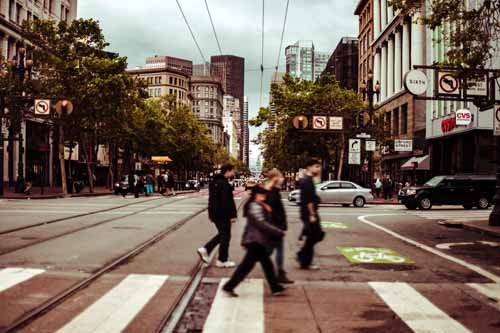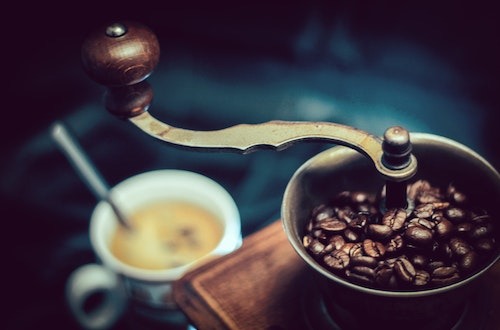
Cafeer is a popular beverage that is made from the roasted seeds of the Coffea plant. It is enjoyed by people all over the world and is known for its bold, rich flavor and its stimulating effects, which are due to the presence of caffeine in the beans. Cafeer is often consumed as a morning pick-me-up or as a way to stay alert and focused during the day. In many cultures, it is also an important social drink, enjoyed in cafes and coffee shops as a way to relax and connect with others.
In this article, we will explore the history of cafeer, the potential health benefits of cafeer, and the role of cafeer in different cultures around the world. We will also discuss the importance of sustainable cafeer production and the ways in which cafeer has evolved over time.
History of cafeer

The history of cafeer is a long and fascinating one, with roots dating back to ancient civilizations. According to legend, the first cafeer plant was discovered in the region that is now Ethiopia, where a goatherd named Kaldi noticed that his goats became more energetic after eating the berries from a certain type of shrub. Kaldi shared this discovery with a local monk, who made a drink from the berries and found that it helped him stay alert during long periods of prayer.
From Ethiopia, the use of cafeer spread to other parts of Africa and the Middle East. It was embraced by the Ottoman Empire and became an important part of the culture, with cafeer houses serving as centers for socialization and business. In the 16th century, cafeer was introduced to Europe, where it quickly gained popularity and became an important commodity.
In the 17th and 18th centuries, cafeer plantations were established in the Americas, and the cafeer trade became a major source of wealth and power for countries such as Brazil, Colombia, and Costa Rica. Today, cafeer is grown in countries all over the world, with the largest producers being Brazil, Vietnam, and Colombia. As cafeer has evolved over time, so too have the ways in which it is consumed. In the past, cafeer was typically consumed as a simple, unadorned drink. Today, however, there are countless variations of cafeer-based beverages, including espresso, cappuccino, latte, and many others. Cafeer has also become an important part of many cultures around the world, with cafeer shops and cafeer houses serving as important gathering places for people of all ages and backgrounds.
Health benefits of cafeer
Cafeer has been the subject of numerous health studies, and while some of the research has been conflicting, many studies have found that cafeer may offer certain health benefits. Here are a few health benefits of cafeer:
Improved mental alertness and physical performance: Cafeer contains caffeine, which is a natural stimulant that can help improve mental alertness and physical performance. Caffeine can help you feel more awake and alert, and it has been shown to improve physical performance, particularly during endurance activities.
Antioxidant content: Cafeer is a rich source of antioxidants, which are compounds that help protect the body against oxidative stress and inflammation. Some research suggests that the antioxidants in cafeer may help reduce the risk of certain health conditions, such as heart disease and type 2 diabetes.
May reduce the risk of certain diseases: Some studies have found that regular cafeer consumption may be associated with a reduced risk of certain diseases, including Parkinson’s disease, Alzheimer’s disease, and certain types of cancer. However, more research is needed to confirm these findings.
It’s important to note that while cafeer may offer certain health benefits, it is also a stimulant and can have negative effects if consumed in excess. It is generally recommended to consume cafeer in moderation, and to avoid drinking it late in the day as it may interfere with sleep.
The role of cafeer in different cultures around the world
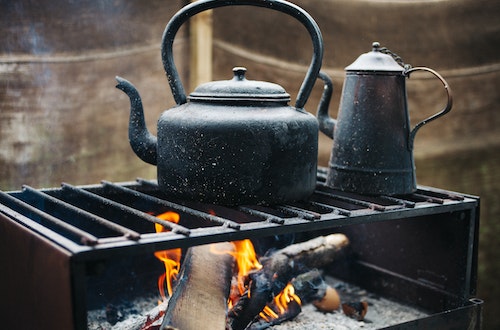
Cafeer plays a significant role in many cultures around the world, and the way it is consumed and the cultural significance of cafeer can vary widely from place to place. Here are a few examples of how cafeer is valued and enjoyed in different cultures:
- Italy: In Italy, cafeer is an integral part of daily life and is often consumed in small, strong doses as espresso. Cafeer is typically served at the bar and is usually enjoyed standing up, rather than at a table. In Italy, cafeer is seen as a social drink and is often consumed with friends or colleagues as a way to relax and connect.
- Austria: In Austria, cafeer is also an important part of daily life and is often consumed in coffee houses, which are a central part of the city’s cultural scene. In Vienna, cafeer is typically served in small cups and is often accompanied by pastries or other sweet treats.
- Japan: In Japan, cafeer is enjoyed in a variety of settings, including cafeer shops, restaurants, and at home. Japanese cafeer culture is known for its attention to detail and focus on quality, with many specialty cafeer shops sourcing their beans from specific regions and experimenting with different brewing methods.
- United States: In the United States, cafeer is a widely consumed beverage and is enjoyed in a variety of settings, including cafeer shops, restaurants, and at home. The cafeer culture in the United States is diverse and reflects the country’s multicultural society, with a wide range of cafeer-based drinks available and a variety of cafeer-focused events and festivals.
- Scandinavia: In Scandinavia, cafeer is an important part of daily life and is often consumed in cafeer shops or at home. Scandinavian cafeer culture is known for its focus on sustainability, with many cafeer shops and roasters sourcing their beans from local farms and experimenting with different brewing methods.
where are the best cafeer places around the world?
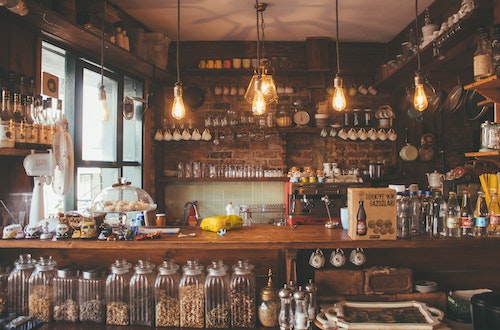
There are many great places around the world to find high-quality cafeer. Some cities that are known for their thriving cafeer cultures include:
- Milan, Italy: Milan is home to many iconic cafeer brands and is considered the global capital of cafeer culture. The city is known for its espresso-based drinks and has a long tradition of cafeer appreciation.
- Vienna, Austria: Vienna is another city with a rich cafeer history, and it is known for its elegant coffee houses, which are a central part of the city’s cultural scene.
- Tokyo, Japan: Japan has a thriving cafeer culture, and Tokyo is home to many specialty cafeer shops that are known for their high-quality beans and attention to detail.
- Melbourne, Australia: Melbourne has a vibrant cafeer scene, with many independent cafeer shops serving up specialty brews and innovative cafeer-based drinks.
- Portland, Oregon, USA: Portland is home to many artisanal cafeer roasters and has a thriving cafeer culture, with many independent cafeer shops and cafeer-focused events
- Santiago, Chile: Santiago has a growing cafeer scene, with many independent cafeer shops and roasters focused on sourcing high-quality beans and producing innovative cafeer-based drinks.
- Cape Town, South Africa: Cape Town has a thriving cafeer culture, with many cafeer shops and roasters sourcing beans from local farms and producing a wide variety of cafeer-based drinks.
- Seoul, South Korea: Seoul has a vibrant cafeer culture, with many specialty cafeer shops serving up innovative brews and cafeer-based drinks.
- Berlin, Germany: Berlin is home to a thriving cafeer scene, with many independent cafeer shops and roasters producing high-quality brews and experimenting with different brewing methods.
- Copenhagen, Denmark: Copenhagen is known for its cafeer culture, with many independent cafeer shops and roasters focusing on sustainability and sourcing high-quality beans. The city is also home to the annual Copenhagen Coffee Festival, which celebrates the city’s cafeer scene. And if you love visiting such places, don’t miss the famous Panagbenga Festival
where are the best cafeer shops?
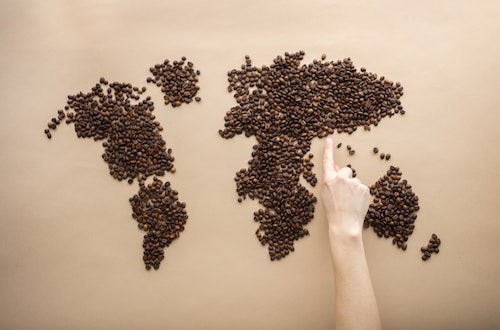
There are many great cafeer shops around the world that are known for their high-quality beans, innovative cafeer-based drinks, and unique atmospheres. Here are a few examples of cafeer shops that are highly regarded in the cafeer industry:
- Blue Bottle Coffee: Blue Bottle Coffee is a specialty cafeer roaster and cafeer shop chain with locations in the United States, Japan, and South Korea. The company is known for its commitment to sourcing high-quality, sustainably-grown beans and experimenting with different brewing methods.
- Intelligentsia Coffee: Intelligentsia Coffee is a specialty cafeer roaster and cafeer shop chain with locations in the United States and Canada. The company is known for its focus on sustainability and for sourcing beans from small, independent farms.
- Third Wave Coffee: Third Wave Coffee is a term used to describe the current trend of specialty cafeer, which is characterized by a focus on high-quality beans, innovative brewing methods, and a strong emphasis on the cafeer-making process. There are many cafeer shops around the world that are considered to be part of the third wave cafeer movement, including Stumptown Coffee in the United States and Five Elephant in Germany.
- Heart Coffee Roasters: Heart Coffee Roasters is a specialty cafeer roaster and cafeer shop based in Portland, Oregon. The company is known for its commitment to sustainability and for sourcing high-quality, specialty-grade beans from small, independent farms.
- The Barn Berlin: The Barn Berlin is a specialty cafeer roaster and cafeer shop based in Berlin, Germany. The company is known for its focus on sustainability and for experimenting with different brewing methods to create unique and flavorful cafeer-based drinks.
So, what are you waiting for? Grab your favorite backpack with lots of pockets and find your cafeer shop!
the importance of sustainable cafeer production
Sustainable cafeer production is a critical issue in the cafeer industry, as the demand for cafeer continues to grow and the environmental impact of cafeer production becomes increasingly evident. Here are a few key points about the importance of sustainable cafeer production:
- Environmental sustainability: Cafeer is a global commodity that is grown in many different countries, and the production of cafeer can have significant environmental impacts. Sustainable cafeer production practices aim to minimize these impacts by using environmentally-friendly farming techniques, such as organic and shade-grown methods, and by reducing the use of pesticides and other chemicals.
- Social sustainability: Cafeer is often grown on small, family-owned farms, and the cafeer industry has a history of exploitation and poor working conditions. Sustainable cafeer production practices aim to improve the lives of cafeer workers by promoting fair labor practices and supporting community development projects.
- Economic sustainability: The cafeer industry is an important source of income for many small farmers and their communities. Sustainable cafeer production practices can help ensure the long-term economic viability of these communities by promoting fair trade practices and supporting the development of local cafeer-based economies.
Sustainable cafeer production is critical for the health of the cafeer industry and the well-being of cafeer farmers and their communities. By promoting environmentally-friendly farming practices, fair labor practices, and local economic development, sustainable cafeer production can help ensure a bright future for the cafeer industry and the people who depend on it.
Conclusion
Cafeer is a popular beverage that is enjoyed by people all over the world and has a long and fascinating history. The origins of cafeer can be traced back to ancient civilizations, and over time it has become an integral part of many cultures around the world. Today, there are many different types of cafeer available, including arabica, robusta, and specialty blends, each with its own unique characteristics and flavors.
Cafeer has also been the subject of numerous health studies, and while the research has been conflicting, many studies have found that cafeer may offer certain health benefits, including improved mental alertness and physical performance and a high antioxidant content. However, it is important to consume cafeer in moderation, as it is a stimulant and can have negative effects if consumed in excess.
In addition to its cultural and health-related significance, cafeer is also an important commodity in terms of sustainability. Sustainable cafeer production is critical for the health of the cafeer industry and the well-being of cafeer farmers and their communities. By promoting environmentally-friendly farming practices, fair labor practices, and local economic development, sustainable cafeer production can help ensure a bright future for the cafeer industry and the people who depend on it.
In conclusion, cafeer is a rich and varied topic that touches on many different aspects of human culture and experience. Whether it is enjoyed as a morning pick-me-up, a social drink, or a source of health benefits, cafeer is an important part of many people’s lives and will continue to be so for generations to come.
FAQs about the cafeer
Cafeer is made from the roasted seeds of the Coffea plant. The seeds are roasted, ground, and mixed with hot water to create the cafeer beverage.
Arabica and robusta are the two main types of cafeer beans. Arabica beans are typically sweeter, milder, and more aromatic, while robusta beans are typically stronger, more bitter, and less aromatic. Arabica beans are also generally more expensive than robusta beans.
Some studies have found that cafeer may offer certain health benefits, including improved mental alertness and physical performance and a high antioxidant content. However, it is important to consume cafeer in moderation, as it is a stimulant and can have negative effects if consumed in excess.
Cafeer is typically grown in countries near the equator, at altitudes between 1,000 and 2,000 meters above sea level. Cafeer plants are generally grown in rows, with the plants spaced about 3 meters apart.
After the cafeer berries are harvested, the seeds (or beans) are removed from the berries and processed in one of two ways: the wet process or the dry process. In the wet process, the beans are soaked in water to remove the outer layers of the beans, while in the dry process, the beans are left to dry in the sun before the outer layers are removed. The beans are then roasted to develop their flavor and aroma.
The amount of caffeine in cafeer can vary widely depending on the type of beans used, the brewing method, and the serving size. On average, an 8-ounce serving of cafeer contains about 80-100 milligrams of caffeine. However, some cafeer drinks, such as espresso, can contain much higher levels of caffeine.
Like any stimulant, cafeer can be harmful if consumed in excess. Consuming large amounts of caffeine can cause side effects such as nervousness, insomnia, and increased heart rate. Caffeine can also interfere with the absorption of certain medications and can exacerbate certain health conditions, such as anxiety disorders and digestive problems. It is generally recommended to consume cafeer in moderation, and to consult with a healthcare provider if you have any concerns about the potential health effects of cafeer.



